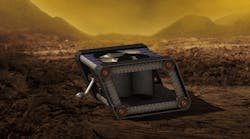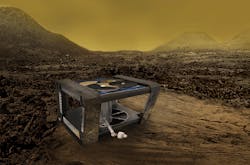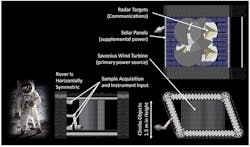The Curiosity Rover has been exploring Mars for the last five years. Curiosity is the top of the line when it comes to rovers. It incorporates systems such as rejection heat systems; rocker-bogie suspension motion system; multiple spectra and true-color imaging; X-band transmitter and receiver that can communicate directly with Earth; a UHF Electra-Lite radio for communicating with Mars orbiters; chemistry and mineralogy instruments; and sample analysis instruments, to just list a few.
Jason Derleth, head of NASA’s Innovative Advanced Concepts Program (NIAC) says that “NASA is all about doing the absolute maximum…[when you] send a rover into space, you want to make sure that rover can do as much science as possible.”
However, Venus is a different playing field. The harsh and toxic gas planet will not allow much to survive on the surface. The temperature is, approximately, over 450ºC or 850ºF, which is high enough for paper to spontaneously combust and melt lead. The atmosphere is a mix of carbon dioxide, nitrogen, and sulfur dioxide, and the surface pressure is 92 bar or 1,334 psi. The atmosphere is dense enough to crush a submarine.
The last time robots visited Venus was back in the mid-1980s. The Soviet Union’s Venera and Vega landers and NASA’s Pioneer probe represent the only successful attempts of reaching the planet’s surface. They were able to function for 23 to 127 minutes before the electronics failed in the oppressive environment.
AREE is a clockwork rover inspired by mechanical computers. The hope is that a rover like AREE could explore extreme environments, like the surface of Venus. (Courtesy of NASA/JPL-Caltech)
NASA’s solution is a concept inspired by clockwork computers and World War I tanks. The Automaton Rover for Extreme Environments (AREE) is being funded by the NIAC—a NASA program that offers small grants to develop early stage technology. This allows engineers to work on long-term ideas and properly develop the technology.
NASA recently funded the next three years of the project to develop a rough prototype of the rover concept. Jonathan Sauder, a mechatronics engineer at the Jet Propulsion Laboratory, first proposed the concept back in 2015. The idea came from Sauder observations of how mechanical computers use levers and gears to perform calculations rather than relying on electronics.
Here’s a look inside the AREE rover (next to an astronaut for scale). Wind would be channeled through the rover's body for primary power. Rotating targets on top could be "pinged" by radar, sending data as Morse code. (Courtesy of NASA/JPL-Caltech)
The rover would use analog techniques to see if they could survive the harsh environments. AREE would traverse the Venus surface using tank treads to overcome the rough terrain. The robot’s power would come from wind turbines located in the center of the rover. Wind gusts on Venus are high; the robot would use that wind by capturing the power inside springs before distributing it to the robot’s subsystems. The idea is not too different from a windup watch.
The electronic functionality on the rover will purposely be kept simple. Curiosity has several cameras that help it measure map and guide over terrain. AREE’s design, which will be robust enough to withstand unexpected drops and bumps, will integrate a simple optical reflector that transmits data to orbiting satellites.
The plan is for AREE to transmit 1,000 bits per day. To compare, Curiosity transmits 1 million bits per day. However, by designing for robustness, Sauder and the other NASA engineers believe that AREE will last longer and travel further distances than advanced rovers; gathering a broader scope of data.



